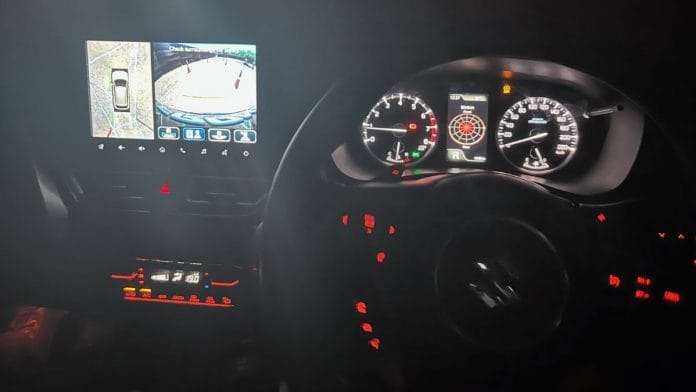As I wrote in my review of Maruti’s latest, the Fronx, the company had organised a ‘driving experience’. After more than two decades of going on media drives, for the large part, I find them quite standard. Sure, occasionally you have an extreme experience like the Audi Ice drive or a day around a racetrack with an exciting car, which are worth remembering. But frankly, most of these drives are boring after a point.
But I will remember the Fronx drive, not for the dusty and gravel-filled track at Goa’s hilltop venue but because it was one of my most unique driving experiences. This Fronx had every one of its windows blacked out like a wraparound blindfold. I remember getting into the car and feeling distinctly uncomfortable. It wasn’t so in a physical sense but my mind felt all foggy at first. I mean, even on the darkest of nights, there is light somewhere.
Since I had stepped into the car after being in bright sunlight, it took me time to adjust my eyes. But this felt weird.
Now, there was the test. I had to reverse the Fronx through an ‘M’ shaped track while only using the reversing cameras. And the vehicle I drove had a 360-degree one. The idea was to achieve a decent time without striking any of the traffic cones that marked the edges of the track. At the end of the track, I was supposed to reverse into a box and move forward for around 20-odd metres while still using the camera. My speed was middle-of-the-road when compared to the other participants and I knocked over only three cones.
Also read: Ode to an engine: The ‘800’ under Maruti’s hood that drove India for 4 decades
Once a gimmick, now a utility
This experience got me thinking and made me wonder just how accustomed we all are to the technology found in cars these days. The reversing camera is something that even entry-level cars such as Maruti Alto and Renault Kwid have today on their higher variants. And just how quickly we have become used to similar features. In fact, when I’m reversing into a parking spot, I rarely—if ever—look at the mirrors. I automatically look down at the camera display every time.
A few years ago, Maruti Suzuki invited me to a camera-monitored driving test at Sarai Kale Khan Regional Traffic Office (RTO) in Delhi.
I breezed through all the other tests but when it came to reversing on an ‘S’ turn in an older Wagon R without any cameras or reversing sensors, I flunked. The first time at least. It was surprising because just a few years before that test, I used to live in a crowded lane of Delhi’s Chittaranjan Park. And I had often reversed cars down a curve quite easily using just the mirrors.
Not just reversing cameras, think of power windows. I remember when my father got a Maruti Esteem VX in 1996, it was ‘the’ feature. But I also remember that people called it a gimmick. Today, it seems like a gimmick if a new car model comes with a wind-up window.
But ask yourself, with advanced air-conditioning systems and ‘pre-cooling’ features in cars these days, how often do you really use windows? It is the same with Advanced Driver Assistance Systems (ADAS). You might never end up using it, but that is also the case with other safety features like airbags. God forbid that you have an accident, but you’re happy that your vehicle has them.
Also read: New Hyundai Verna spells death of diesel sedans in India. And the industry did this to itself
Not a silly feature
Some automobile features do feel like gimmicks at first but once you start using them, you can’t quit. The first time I experienced ventilated seats was in a 2015 Hyundai Elantra. And I fell in love with it one late evening in May. The cooled seat is just the best feature for India’s weather. I even spoke to Hyundai India management at the time and told them that they should introduce it in more affordable cars. I don’t think it was because of me but the Kia Seltos launched in 2019 and the second-generation Hyundai Creta of 2020 had ventilated seats.
Today, cars from Skoda-Volkswagen to Maruti Suzuki and even Toyota have this feature. A friend of mine recently bought a Maruti Suzuki Grand Vitara Hybrid and it isn’t the fantastic fuel economy he leads with when talking about his new wheels but the ventilated seats. “Seemed like a silly feature until the first day I was returning from playing tennis and now I think every car should have it,” Prateek told me.
Whether it is the reverse camera or the ventilated seat, you realise the utility of some features in a car only when you find yourself in an uncomfortable position. But the larger question remains: is advanced technology making us worse and lazier drivers?
@kushanmitra is an automotive journalist based in New Delhi. Views are personal.
(Edited Ratan Priya)






